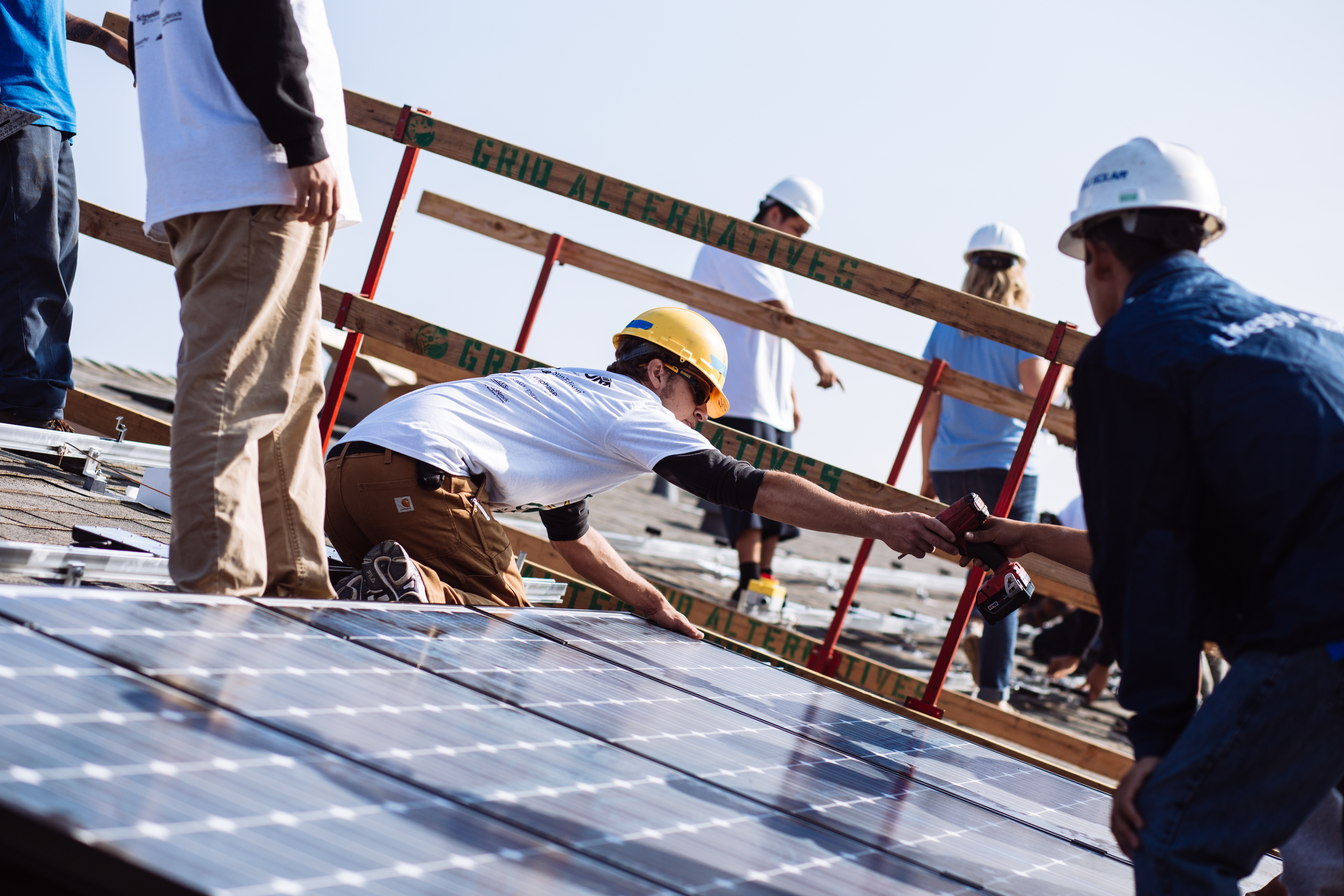
Many programs offer clean and efficient energy technologies to vulnerable households at low or no cost, but getting people to participate can be challenging. A recent study of California's low-income solar program demonstrates how to increase program uptake by up to fivefold using behaviorally-informed peer referral strategies.
Underserved households spend a disproportionate amount of their income on energy bills. To address this burden and promote clean energy, policies such as the Inflation Reduction Act include programs to provide clean and efficient energy services to income eligible households at low or no cost. But even when upfront costs are removed, challenges remain. Eligible households may lack information about the technology, be distrustful of program providers, or simply not have the bandwidth to look into the application process. A new study examines how to increase program uptake by encouraging existing program participants to nominate their friends or family to participate.
"Growing evidence points to the power of social networks to encourage adoption of new energy technologies,” says Kim Wolske, lead author of the study and a research associate professor at the University of Chicago Harris School of Public Policy. "For subsidized low-income programs, existing program participants may be especially important. They know what it takes to qualify and can more readily identify eligible friends and family. Our study shows, however, that to stimulate referrals to these programs, we need to think beyond traditional financial incentives.”
Wolske—along with her co-authors Annika Todd-Blick from the Lawrence Berkeley National Laboratory and Emma Tome, a former intern at the National Renewable Energy Laboratory (NREL)—collected data from homeowners who received fully subsidized solar through GRID Alternatives, the program administrator for California’s Single-family Solar Homes (SASH) program.
“From GRID Alternatives' years of experience working in partnership with environmental justice communities, we know that referrals are the best way to build trust and find new program participants,” says Erica Mackie, GRID’s CEO. “The researchers’ goal was to identify cost-effective, scalable strategies to make referring even more appealing. This study provides important information about ways to ensure that more people, especially those historically impacted by climate injustice, have access to renewable energy solutions.”
To encourage referrals, GRID Alternatives had a referral rewards program where existing program participants were sent postcards reminding them that they could receive $200 if they referred friends and those friends installed solar. The researchers tested what would happen if this request for referrals also included one dollar as a gift to thank clients for being part of the solar community. The goal was to invoke a sense of reciprocity – a feeling that they could return the kindness of the gift by offering names of other households that might qualify to participate. The strategy worked, leading to twice as many referrals and more than double the number of solar contracts.
Going one step further, the researchers tested what would happen if they combined the $200 reminder and the dollar gift with a postmarked referral slip. In addition to calling or going on a website to refer someone, households could simply write their friends’ contact information on the card and send it back to the program. This combination of strategies led to five times more people referring someone they knew, as well as five times more solar contracts then only offering the $200 reward.
“Our study shows that to get the most out of peer referrals, the request for referrals needs to remove uncertainty about what referring entails and make the process simple. It also helps if program participants feel some sense that they’re returning a favor,” said Wolske. “Appealing to reciprocity may be particularly effective for energy assistance programs as it may remind participants of the much larger gift they already received – in this case a rooftop photovoltaic system.”
The researchers see potential for broader applications. "The strategies we've identified could work for other energy assistance programs, from heating and insulation upgrades to electric vehicle incentives,” says Wolske. “The ultimate goal is to extend the reach of these programs, making our energy systems more efficient, cleaner, and inclusive."
